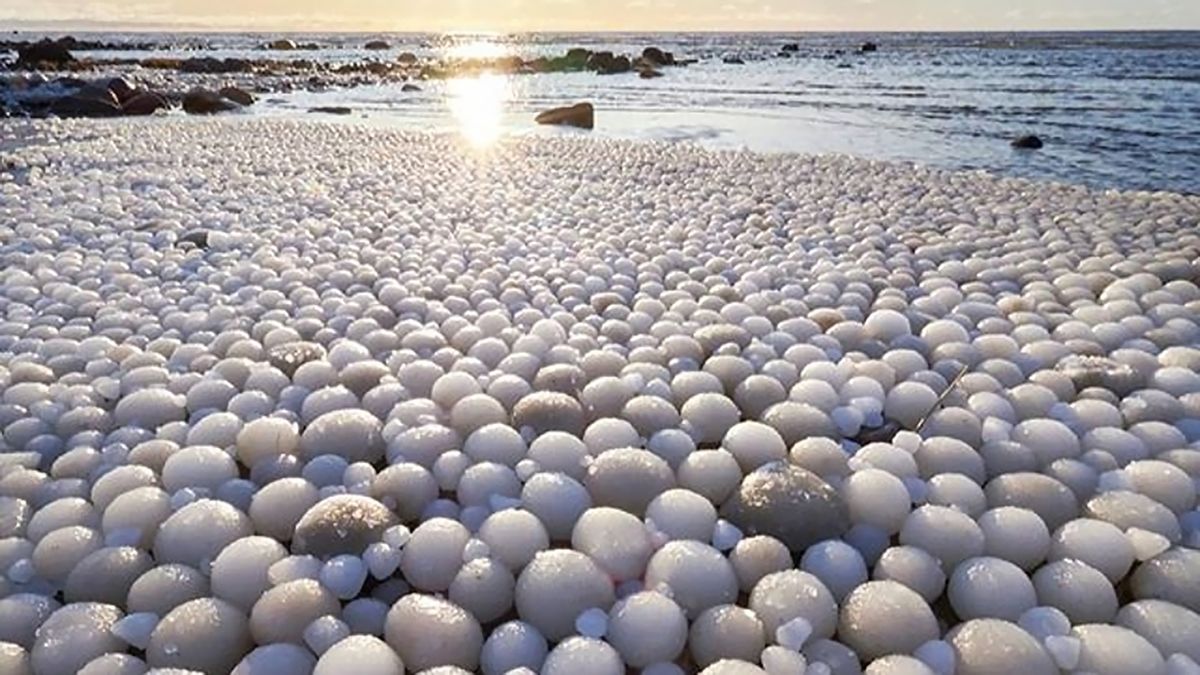Thousands of Glorious 'Ice Eggs' Wash Up on Finnish Beach
The "ice eggs" form due to a rare weather phenomenon.

Smooth balls of ice rolled ashore on a beach in Finland and piled up like a gigantic clutch of turtles' eggs.
But where did these "ice eggs" come from? Turns out, the frigid orbs were sculpted by a peculiar combination of weather and waves, according to news reports.
Amateur photographer Risto Mattila stumbled upon the strange sight while walking with his wife on Hailuoto Island, a land mass between Finland and Sweden, according to BBC News. The temperature hovered around 32 degrees Fahrenheit (minus 1 degree Celsius) that day, he said, and the wind whipped across the beach. "There, we found this amazing phenomenon. There was snow and ice eggs along the beach near the water line," he told the BBC.
Related: The World's 7 Most Interesting Eggs
A photo posted by @rismatti on Nov 3, 2019 at 10:08am PST
The "ice eggs" littered an area the length of about one-quarter of a football field and ranged in size from that of an average chicken egg to that of a hefty soccer ball, Mattila said. He snapped a photo, noting that he had "never seen anything like this during 25 years living in the vicinity."
Others came upon the ice eggs, too. "This was [an] amazing phenomenon, [I've] never seen before. The whole beach was full of these ice balls," Tarja Terentjeff, who lives in the nearby town of Oulu, told CNN. Another local, Sirpa Tero, told CNN she'd seen icy orbs line the shoreline before, "but not over such a large area."
Although fairly rare, these ice eggs form similarly to sea glass or rounded stones that wash up on the beach, said BBC Weather expert George Goodfellow. Chunks of ice break off from larger ice sheets in the sea and either taxi to shore on the incoming tide or get pushed in by gusts of wind at the water's surface, he explained. Waves buffet the ice chunks as they travel, slowly eroding their jagged edges into smooth curves. Seawater sticks and freezes to the forming eggs, causing them to grow like snowballs do as they roll across the ground.
Sign up for the Live Science daily newsletter now
Get the world’s most fascinating discoveries delivered straight to your inbox.
Once the ice chunks reach shore, pounding waves tend to buff out any lingering kinks on their surfaces, leaving behind nothing but sleek and shiny "eggs" for curious tourists to happen upon.
- Photos: The 8 Coldest Places on Earth
- Real or Not? The Science Behind 12 Unusual Sightings
- 10 Surprising Ways Weather Has Changed History
Originally published on Live Science.


Nicoletta Lanese is the health channel editor at Live Science and was previously a news editor and staff writer at the site. She holds a graduate certificate in science communication from UC Santa Cruz and degrees in neuroscience and dance from the University of Florida. Her work has appeared in The Scientist, Science News, the Mercury News, Mongabay and Stanford Medicine Magazine, among other outlets. Based in NYC, she also remains heavily involved in dance and performs in local choreographers' work.











